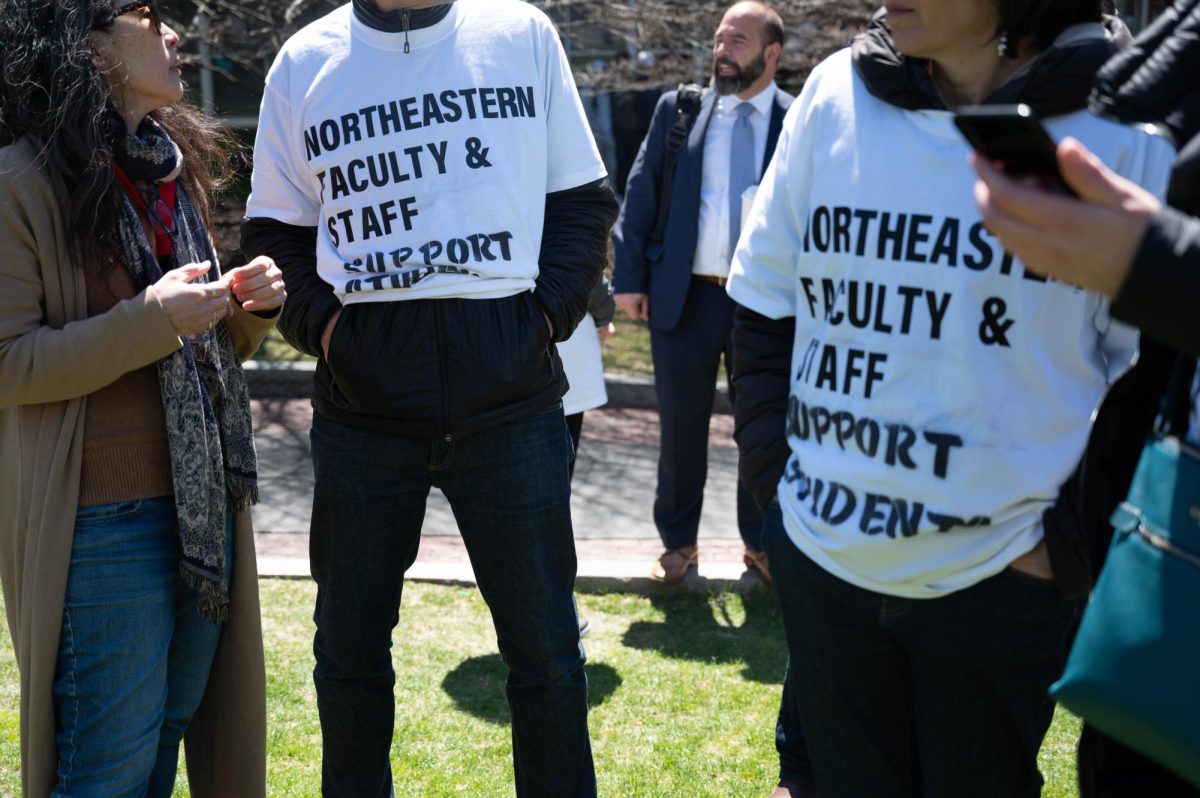The third in a four part series detailing the background of buildings on Northeastern’s campus.
Fitness centers and research labs do not usually have a lot in common. The gym is the realm of spandex and treadmills, not lab coats and microscopes. At Northeastern, however, these two facilities have more in common than one might expect.
The Maureen and Richard J. Egan Engineering/Science Research Center was dedicated in October of 1996. The $30 million facility was largely funded by Richard Egan, an alumnus of Northeastern and a member of the Board of Trustees. Egan donated $6.7 million toward the building, which at that time was one of the two largest donations ever made to the university by a private donor. The other donation was a $6 million donation from a man named Roger Marino.
Marino is the namesake of the Roger M. and Michelle S. Marino Recreation Center, which was dedicated within a month of the Egan Center. These twin donations were no coincidence. Marino and Egan went to school together and they made their millions together.
Both men graduated from Northeastern in 1961 with degrees in electrical engineering. After they had both gained some experience in the industry, they joined together 18 years later to form EMC Corp., a company that designs and manufactures computer storage products. The company swelled to a $2 million enterprise, and became the first company to receive the Boston Globe’s Company of the Year Award two years in a row.
In the mid-1990s, the self-made tycoons decided to give back.
Marino’s donation went to the construction of the Marino Center, an 81,000 square foot facility that cost a total of $12 million. Prior to the Marino Center, the only fitness facility on campus was Cabot Gym, which had limited access for individual student use.
“We were in a shared relationship with physical education athletics,” said Gene Grzywna, director of campus recreation. “The only time of day that it would be available for individual students would be the early morning hours, 6 to 8 in the morning or at night from 8 to 10, which is only a sliver of time compared to what we have now.”
Now, with the Marino Center open 24 hours a day, Grzywna said he believes the center is a draw for prospective students.
“I think most people taking a tour of Northeastern get a chance to walk through the atrium and see Marino, and that might be another reason to go here,” Grzywna said.
Just as the construction of the Marino Center transformed the recreational opportunities on campus, the Egan Center drastically improved Northeastern’s scientific research capabilities. The four-story, 95,000 square foot facility increased the university’s research space by approximately 50 percent, and includes high-tech labs for signal processing, chip making and other advanced scientific work.
The center is used by the College of Engineering and the College of Arts ‘ Sciences, and has been specifically helpful to the chemistry and physics departments, said Allan Soyster, dean of the College of Engineering.
“It really is all it’s supposed to be,” said Graham Jones, chair of the Chemistry Department. “It brings in students from different disciplines. It’s much easier for collaboration to take place when the students are right there and they rub shoulders with students of different disciplines.”
Soyster also emphasized the importance of the center.
“It gives us an opportunity to attract top faculty and gives them an opportunity to work in a really top-class environment,” Soyster said. “It greatly enhanced Northeastern’s stature.”
Egan and Marino are both still active members of the Board of Trustees, attending meetings and university functions.
“They’re both very loyal alumni of Northeastern, they’re both very generous, and have both done great services for the university and the community,” said Vincent Lembo, vice president of the University Council.
Neither Egan nor Marino could be reached for comment.









